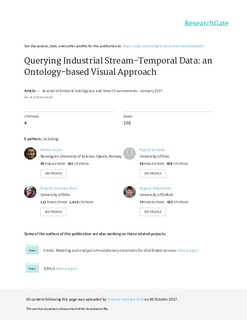| dc.description.abstract | An increasing number of sensors are being deployed in business-critical environments, systems, and equipment; and stream a vast amount of data. The operational efficiency and effectiveness of business processes rely on domain experts’ agility in interpreting data into actionable business information. A domain expert has extensive domain knowledge but not necessarily skills and knowledge on databases and formal query languages. Therefore, centralised approaches are often preferred. These require IT experts to translate the information needs of domain experts into extract-transform-load (ETL) processes in order to extract and integrate data and then let domain experts apply predefined analytics. Since such a workflow is too time intensive, heavy-weight and inflexible given the high volume and velocity of data, domain experts need to extract and analyse the data of interest directly. Ontologies, i.e., semantically rich conceptual domain models, present an intelligible solution by describing the domain of interest on a higher level of abstraction closer to the reality. Moreover, recent ontology-based data access (OBDA) technologies enable end users to formulate their information needs into queries using a set of terms defined in an ontology. Ontological queries could then be translated into SQL or some other database query languages, and executed over the data in its original place and format automatically. To this end, this article reports an ontology-based visual query system (VQS), namely OptiqueVQS, how it is extended for a stream-temporal query language called STARQL, a user experiment with the domain experts at Siemens AG, and STARQL’s query answering performance over a proof of concept implementation for PostgreSQL. | nb_NO |
